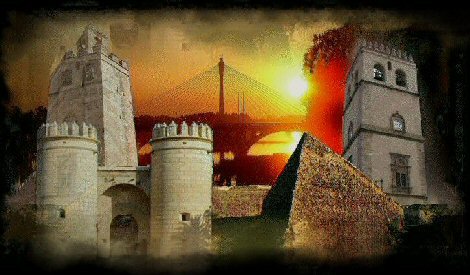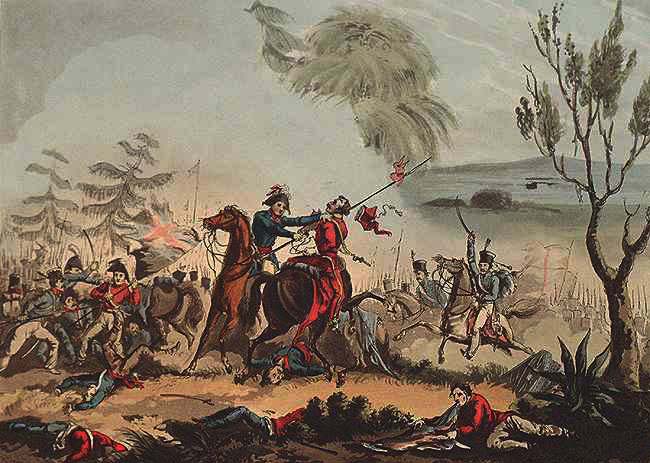BATTLE OF THE ALBUERA

|
BATTLE OF THE ALBUERA |
 |
||
| The control of Badajoz by any of the contending sides in the War of Independence, was vital to prevent the passage of the French army to Lisbon. Napoleón tried by all means to distrct the generals english and coordinating other attack from northern Portugal. | |||
 The fort square of Badajoz had been taken over by the French, following the death of the French's commander, General and Marshal of Campo Menacho. After the Battle of Genous, the reinforcements reached Badajoz were wiped out. Once General Imaz took command, he surrendered the square. Beresford's arrival in aid of the city was ultimately useless, as was the place being subjected to a new fence, as an important army corps was approaching from the south. The fort square of Badajoz had been taken over by the French, following the death of the French's commander, General and Marshal of Campo Menacho. After the Battle of Genous, the reinforcements reached Badajoz were wiped out. Once General Imaz took command, he surrendered the square. Beresford's arrival in aid of the city was ultimately useless, as was the place being subjected to a new fence, as an important army corps was approaching from the south.
In view of this, the Allied command decides according to the Spanish generals, to concentrate the troops to face the French still somewhat far from Badajoz. The fence of the square was softened and after a meeting held in Valverde de Leganés, it was decided to present battle in the fields of La Albuera, about 20 kilometers from the capital, on the way to Seville. The Spanish generals José de Lardizábal, Francisco Ballesteros and José de Zayas participated on the allied side, among others. He commanded the cavalry, Mr. Casimiro Loi. There were also important troops from General Castaños' army corps. By the English, General Alten occupied the upper areas surrounding the village, supported by Steward, Houghton and Myers forces. As the number of English fighters is higher than that of Spaniards and Portuguese, Marshal Beresford took over as chief. A total of 32,000 men obeyed his orders, almost half of which belonged to Spanish bodies. Among them were abundant cavalry units and artillery pieces of different calibers. In the early morning of May 16, 1811, the French army corps commanded by Marshal Soult began advancing towards the Allied lines. He was accompanied by Generals Godinot, Pepin, Werlé, Gazan, Maransin, Bruyer, Briche, Girard and the Latour-Maubourg cavalry. They advanced from Santa Marta in the midst of a misty environment that augured rainy weather. French artillery began by cannoning the allied positions with intensity, while an attack on its left flank began. Warned of defenses, they reacted appropriately, although they considered it a dissimilar attack. The real attack was launched soon after on the opposite side of the initial one. The crossing of the fire of the gunners' batteries, the bloody and bloody attacks of both cavalry and the bloody hand-to-hand combat, caused a great death in both ranks, without the passage of time decanting victory on either side. In the heat of the terrible battle, and despite the evolutions of the French cavalry and the firing power of their artillery, General Zayas's men and those of the Cole division, lashed out violently at the French lines that were coiled , albeit with the price of a terrible cost of own living. At one point, there is a great deal of confusion and much of the French army undertakes the retreat to the south. The Allies tenaciously pursued them ready to exterminate them. But the French artillery with deadly recision caused them to desist from persecution. British generals Houghton and Myers were killed in combat. Nearly 13,000 men perished, leaving the battlefield completely covered with corpses from both sides. Both French and English proclaimed their victory, although in reality all that was achieved was the French retreat and the continuation of the siege of Badajoz. |
||
|
|
|
|
|
Antonio García Candelas |
||
| BADAJOZ |